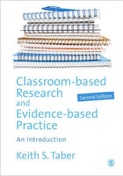Educational Research Methods

A site to support teaching and learning...

Structured interviews
“...if one was testing the hypothesis that ‘girls are just as likely to experience bullying as boys’, then one would wish to make sure that the same question was asked in the same way, so that the respondents’ judgements were not influenced by different phrasing of the question, or differently cued by the question sequence. (Asking the question ‘can bullying be verbal, or must it always be physical?’ just before asking ‘have you ever been the victim of bullying?’ could well lead to a different response to the second question.) ... In this situation (an enquiry that is likely to be identified as within ERP1...), a fully structured interview schedule would be appropriate” (Taber, 2013: 275-276)
““structured interviews often produce quantitative data” (DiCicco-Bloom & Crabtree, 2006: 314)
DiCicco-Bloom, B., & Crabtree, B. F. (2006). The qualitative research interview. Medical Education, 40, 314-321.
Structured interviews are used when interviewing is used as a data collection technique within research studies using survey methodology.
Why interview in surveys (rather than just issue a questionnaire)?
-
•Ability to clarify questions (but meant to be standard questions)
If the participant does not understand the question, or some of the vocabulary, the interviewer may be allowed to explain it.
-
•In situ coding - can check response fits allowed category
The interviewer often has to assign the response to one of a number of predetermined response categories.
-
•Response rate (these are often low in response to questionnaires)
People may be more likely to answer questions verbally, than to complete a paper form or go on line - it may seem less effort, or they may prefer human interaction, or the presence of a human asking may persuade them they should respond
-
•Control of sample make-up
If the sample has to be representative in terms of, e.g. age, gender, etc, then the interviewer can be selective in asking questions to those in categories with too few respondents. (Does this raise possibilities for biasing the sample?)
This is a personal site of Keith S. Taber to support teaching of educational research methods.
(Dr Keith Taber is Professor of Science Education at the University of Cambridge.)
Taber, K. S. (2013). Classroom-based Research and Evidence-based Practice: An introduction (2nd ed.). London: Sage.
Interviews are sometimes classed as structured, unstructured or semi-structured:
